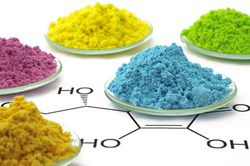 That was my initial reaction when I first heard about iGC. I learned then, that the trick about „inverse“ is that particles and fibres of unknown surface characteristic are filled INSIDE the column of a GC and probes of well-defined gases are pulsed over them. The interaction of different gases with the surface provide the retention times and tailing – and thereby quantitative values for dispersive surface energy, polar contributions, acid/base properties at surface level or a „nanoroughness“ by comparing linear and branched alkanes – amazing! OK, another method, but where can I use it and why? Surfaces determine the quality of many products, the compatibility of silica in rubber, pigments in plastic or even (or especially) the feeling of hair. Most often the application is measured, but the real understanding of what changed at surface level is lacking. This is innovation by chance and product optimization by trial and error. And beside product invention or optimization there are often other obscure problems: batch-to-batch variations, dispersion behaviour or unexpected changes by milling. What happened to my product? Is iGC complicated? YES and NO. No, because the equipment is basically a GC - not more required. YES, because the preparation, experimentation and interpretation requires experience and a real understanding of the underlying theory. Especially with iGC the saying is true that real value is in the expert and not in the instrument. By chance I found Eric Brendle from Adscientis who explored iGC during his PhD more than ten years ago. Since then he has explored many different surfaces with passion and skills. Not surprising, we are collaborating! Sure, iGC can not answer all questions, ... ... but it is truely an interesting method to characterize surfaces at molecular level. On April, 10th, 2014 a mini-Symposium in Frankfurt with speakers from BASF, DSM, Solvay and several professors will shed more light on a few applications. A good chance to talk to practitioners and academics. There is still the chance to register -> http://inverse-chromatography.com Surfaces are truely remarkable. Only a few layers of molecules in the range of nm determine the success – or the failure – of everyday products. Interesting how difficult it is to measure – and how little we know in many cases.
1 Comment
|
|
We are eager to support you.
|



 RSS Feed
RSS Feed